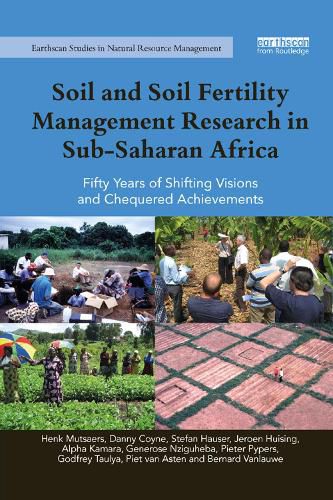Readings Newsletter
Become a Readings Member to make your shopping experience even easier.
Sign in or sign up for free!
You’re not far away from qualifying for FREE standard shipping within Australia
You’ve qualified for FREE standard shipping within Australia
The cart is loading…






Judicious soil fertility management is crucial for sustainable crop production and food security in sub-Saharan Africa (SSA). This book describes the various concepts and approaches underlying soil and soil fertility management research in SSA over the last fifty years. It provides examples of important innovations generated and assesses the position of research within the research-to-development continuum, including how innovations have been validated with the intended beneficiaries.
Using the experience of the International Institute of Tropical Agriculture (IITA) as a case study, the authors analyse how processes, partnerships and other factors have affected research priorities, the delivery of outputs, and their uptake by farming communities in SSA. They evaluate both successes and failures of past investments in soil fertility research and important lessons learnt which provide crucial information for national and international scientists currently engaged in this research area. The book is organised in a number of chapters each covering a chronological period characterised by its primary research content and approaches and by the dominant research paradigms and delivery models.
$9.00 standard shipping within Australia
FREE standard shipping within Australia for orders over $100.00
Express & International shipping calculated at checkout
Judicious soil fertility management is crucial for sustainable crop production and food security in sub-Saharan Africa (SSA). This book describes the various concepts and approaches underlying soil and soil fertility management research in SSA over the last fifty years. It provides examples of important innovations generated and assesses the position of research within the research-to-development continuum, including how innovations have been validated with the intended beneficiaries.
Using the experience of the International Institute of Tropical Agriculture (IITA) as a case study, the authors analyse how processes, partnerships and other factors have affected research priorities, the delivery of outputs, and their uptake by farming communities in SSA. They evaluate both successes and failures of past investments in soil fertility research and important lessons learnt which provide crucial information for national and international scientists currently engaged in this research area. The book is organised in a number of chapters each covering a chronological period characterised by its primary research content and approaches and by the dominant research paradigms and delivery models.